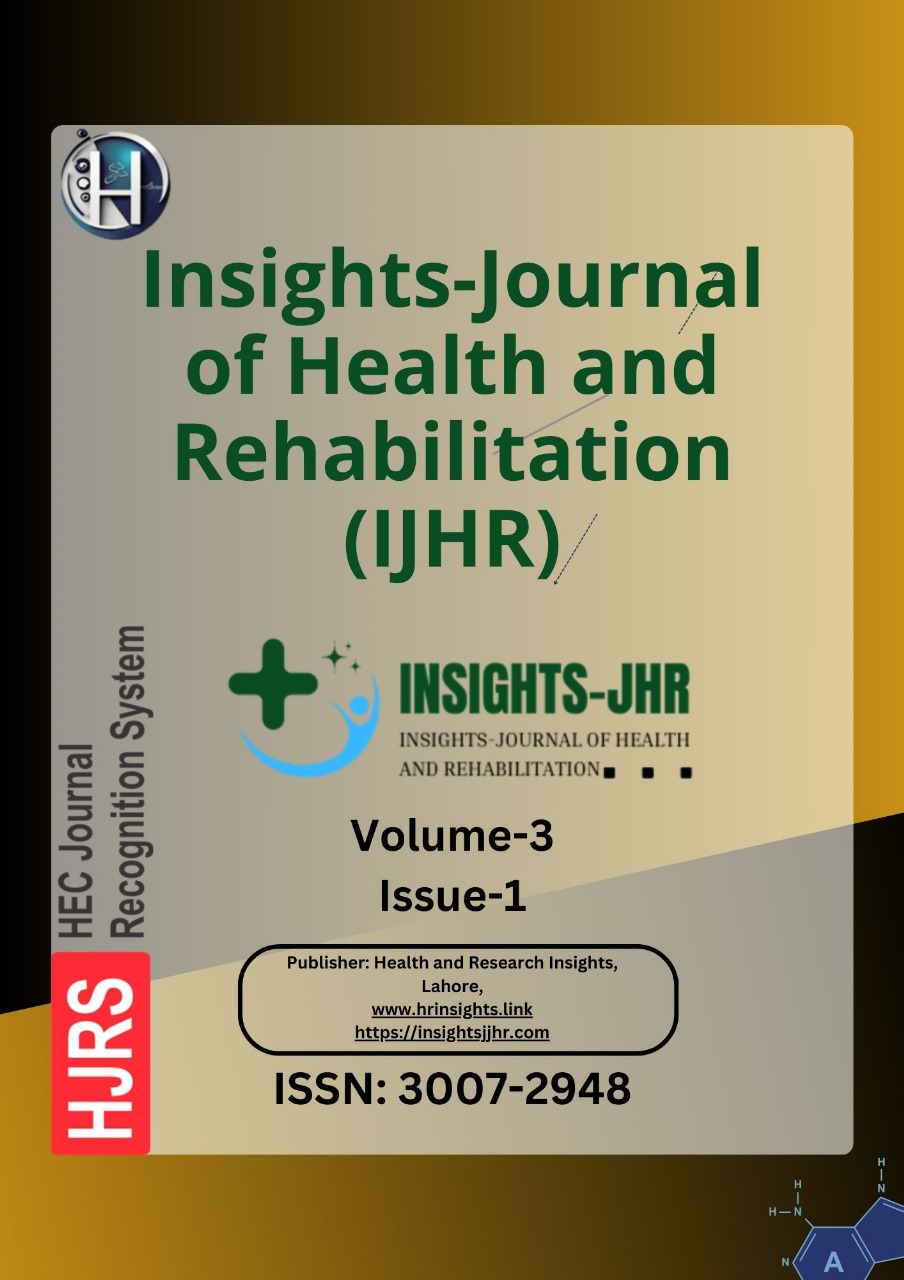BALANCE AND VESTIBULAR DEFICITS IN CHILDREN WITH PROFOUND UNILATERAL HEARING IMPAIRMENT
DOI:
https://doi.org/10.71000/setb6k52Keywords:
Balance disorders, Hearing loss, Pediatric vestibular assessment, Postural stability, Sensorineural hearing loss, Unilateral hearing impairment, Vestibular dysfunctionAbstract
Background: Hearing loss is among the most prevalent sensory impairments, significantly impacting communication, spatial awareness, and motor coordination. Unilateral hearing loss (UHL) often remains underdiagnosed in ENT screenings despite its known association with vestibular dysfunction. The vestibular system plays a crucial role in balance by integrating sensory input from visual, proprioceptive, and auditory pathways. This study aimed to determine the prevalence and association between balance impairments and vestibular deficits in children with profound unilateral sensorineural hearing loss (SNHL).
Objective: To assess the frequency and correlation of balance and vestibular dysfunction in children with profound unilateral SNHL.
Methods: A cross-sectional study was conducted among 68 children (33 males, 35 females) aged 8–15 years, recruited from special education schools and ENT clinics. Dynamic balance was assessed using the Pediatric Berg Balance Scale (PBBS), a 14-component test, while static balance and vestibular function were evaluated through the Pediatric Clinical Test of Sensory Interaction on Balance (P-CTSIB) and the Vestibulo-Ocular Reflex (VOR) assessment. Statistical analysis was performed using SPSS version 25, with chi-square tests applied to determine associations between balance deficits and vestibular impairments.
Results: The mean age of participants was 10.57 ± 2.083 years. A significant association (p < 0.05) was observed between vestibular dysfunction and balance deficits. Overall, 68% of children exhibited major impairments in maintaining both static and dynamic balance. In P-CTSIB Conditions 5 and 6, where vestibular input was isolated, the Phi and Cramér’s V value was 0.624, indicating a strong correlation. VOR testing revealed abnormal compensatory eye movements in 36.7% of children, further confirming vestibular dysfunction.
Conclusion: Children with profound unilateral SNHL exhibited significant balance deficits and vestibular dysfunction. These findings highlight the need for routine vestibular screening in children with hearing impairment to facilitate early intervention and improve motor function.
Downloads
Published
Issue
Section
License
Copyright (c) 2025 Ateeb Arooj, Anum Farooq, Rimsha Munawar , Tehniat Fatima Zafar , Amna Bibi, Aaleen Fatima, Asma Bhatti, Noor Fatima (Author)

This work is licensed under a Creative Commons Attribution-NonCommercial-NoDerivatives 4.0 International License.







